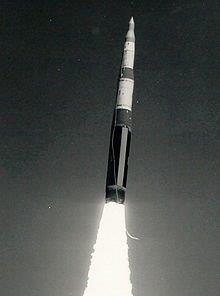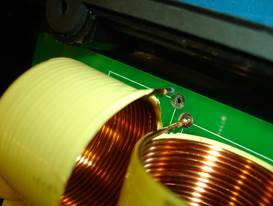A “roofing” filter...
Is a term in ham radio receivers probably coined around the first appearance of DSP rigs. On the diagram at right, a roofing filter lies where a “1st IF filter” was in analog superhets back in the day. That was a good enough name. Why change it?
The short of it is this: The new name suggests providing “shelter in a storm” (of signals and noise power) to a vulnerable function downstream of the filter. A “rain” of converted signals, making it through the broad frontend “band” filter, plus the wideband (WB) noise there showers down from a receiver’s first mixer toward the demodulator. Best to have roofing in place for flood control!
A “roofing” filter is a term in ham radio receivers probably coined around the first appearance of DSP rigs. On the diagram at right, a roofing filter lies where a “1st IF filter” was in analog superhets back in the day. That was a good enough name. Why change it?
The short of it is this: The new name suggests providing “shelter in a storm” (of signals and noise power) to a vulnerable function downstream of the filter. A “rain” of converted signals, making it through the broad frontend “band” filter, plus the wideband (WB) noise there showers down from a receiver’s first mixer toward the demodulator. Best to have roofing in place for flood control!
Now just a bit more detail, the long of it. But no serious math!
Back in the day, what followed a 1st IF filter was a second mixer forming the 2nd IF of an analog double conversion receiver. That 2nd mixer would have a pretty high IP3 (for high dynamic range plus high power handling to conserve a softer analog-filtered converted spectrum). Yes, there were crystal filters back then, but they were less common and likely viewed as very premium.
Fast forward to DSP ham rigs, other than “direct sampling” types, the 1st IF filter often drives an analog-to-digital converter (ADC). Generally, an ADC can feature either high dynamic range and power handling, or a larger effective number of bits (ENOB) for better digital SNR, particularly useful with floating point DSP. Alas, for a reasonable part cost and power dissipation, an ADC can’t support both of these disparate high goals at once. On the signal path, the reduced power just adjacent to a desired signal plus power excised by wide and deep filter stopbands of a very sharp filter passband nicely accommodates high ENOB ADC.
So this is the reason “roofing,” pluralized, is the word. One roof is sharp edged yet broad on one side. Two roofs, above and below fIF, suppresses two neighborhoods that are still at RF frequency.
A superhet first mixer output can pack a lot of power, today or in yesteryear. At right, Ptotal = PSB– + PPB + PSB+ . From VLF-UHF, other than AM and FM, hams are restricted to 3kHz transmit BW, and so the most receive Hz needed for a QSO. Stopband power (PSB– + PSB+) holds merely irrelevant information. At IF, passband (PB) power is what’s relevant! But those SBs likely hold almost all of Ptotal. Consider 300kHz /3kHz SSB in 40m; that’s potentially 100x the PB width, or a 20dB “load” of unnecessary power. Call that the “rain” from the storm we’d like to protect the ADC from, not just for the ENOB, but also for “conversion headroom.” You never want an ADC to “hit the rails.” A continuing role for AGC!
Some other things are worth mention. Older rigs had adjustable “Preselector” RF filters, a compromise tailoring the total power making it to the 1st mixer, thus adding onto the 1st IF filter shape, lightening the load downstream. That’s a bygone thing. Hams today expect to command a VFO and everything falls into place! Encountering a low noise floor with few big signals, it might even be useful to add RF gain up front, and so legacy and modern rigs both do that, many moderns up to 20dB. All the more reason that roofing filter needs to be steep and deep, its signature attributes! Roofing filters are often high order, low ripple crystal lattice types with that might well have been considered a costly bit of overkill back in the day. Not today! The diagram illustrates an idealized 300 Hz roofing filter in a notional “bandscape” of various CW signals. Just scale it up for digimodes, RTTY, SSB or AM, even FM! The idea is general purpose. The goal is the same.
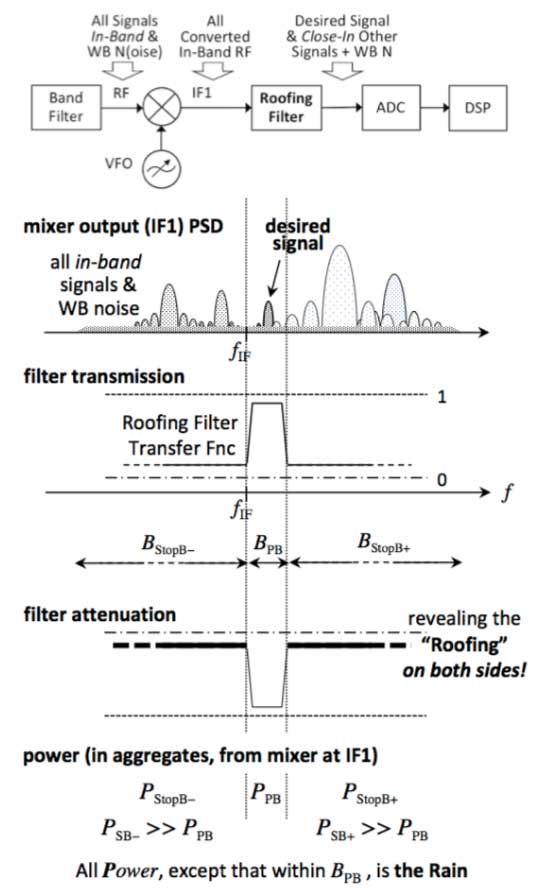
A Few Comments in Closing
The receive PB of interest, “open to the sky,” is what the DSP deals with. It has to take whatever rain drops fall there, near a desired signal, and render them harmless enough. But the DSP needs a linear representation of the PB to do its magic, and it’s the role of a roofing filter to keep it that way. Otherwise, if the ADC going got too rough, it could succumb to that old adage, garbage in, garbage out! But relax! We ultimately can fall back on AGC to save a spectral garden from a mudslide. The DSP “long loop” to AGC will tap us out of SNR perdition! Better some than none. As for those fancy rig specan waterfalls, that’s going to bypass the roofing filter onward to a second ADC tailored for power. You almost never get something for nothing!
Keith Kumm, AI7SI, is a member and of Group 7155 living in Tucsan, AZ who says that he enjoys "a bit of SSB and the Zen of CW.
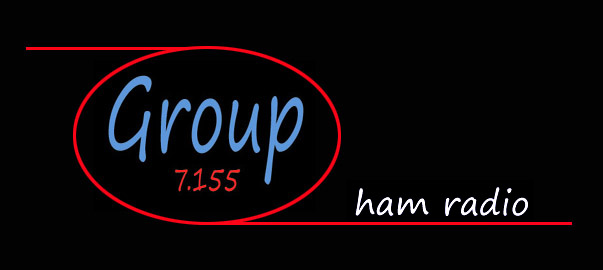
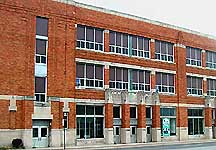

 I finished my career, heavily involved in the space program, on the technical side of the ending of the Cold War. The Soviets could not compete with the US Air Force, Star Wars, The Rail Garrison and the satellite surveillance programs emanating from Vandenberg as well as other locations. Vandenberg is known as the Western Missal Test Range and many persons Civilian and Military participated in the effort. I was lead engineer on many of the communications programs, especially Titan IV, working for a government contractor. There were also government program directors which interfaced closely.
I finished my career, heavily involved in the space program, on the technical side of the ending of the Cold War. The Soviets could not compete with the US Air Force, Star Wars, The Rail Garrison and the satellite surveillance programs emanating from Vandenberg as well as other locations. Vandenberg is known as the Western Missal Test Range and many persons Civilian and Military participated in the effort. I was lead engineer on many of the communications programs, especially Titan IV, working for a government contractor. There were also government program directors which interfaced closely.